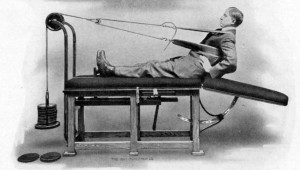It’s time to make like Mick Hucknall and talk about money, money, monaaaay* by which I mean customer lifetime value.
Specifically – how do justify spending a certain amount of money, when chasing a certain audience, to sell a certain product when money is too tight to mention? Well, you refer to your customer lifetime value or CLV.
This blog post was conceived in Wollongong. I was there for the Community Industry Group, working with a posse of marketers from disability, community and age care services along with a smattering of small businesspeople.
Some of these people were marketing NDIS services. A new NDIS client might stay for years, bringing long-term revenue and referring the provider more business – that’s a high CLV.
I recommended giving prospective NDIS clients a gift – not for signing on but just as part of the sales process during a preliminary face-to-face meeting. I was thinking movie tickets, a pass to the aquatic centre or a free trial of another service the provider offered – nothing grand.
“Won’t that get expensive?” came the question.
Back in Melbourne I got the same question from a residential age care provider which lives and dies on its ability to persuade total strangers to entrust their entire lives to their nursing homes at substantial cost and great upheaval. They too balked at my suggestion of a gift on the basis of cost. (Give me strength!)
In both situations the marketer was unable to tell me how much a new customer was worth to them – not even a decent estimate. It had never been truly considered. Profits, pricing and customer lifespan was secret knowledge held by the top brass. (Puh-lease!) This is not OK.
But last week when a client asked me if spending $600 a month to manage Google AdWords campaigns was worthwhile I realised that too few marketers have nutted out just how much a new client or customer is worth to them financially.
Without this knowledge it’s impossible to evaluate whether any given expenditure is justified. Too often doubt leads to paralysis.
CLV
A prospective customer’s worth to you over the course of your relationship is described as their customer lifetime value (CLV). CLV (sometimes called Lifetime Customer Value or Lifetime Value) is a sales and marketing fundamental.
Fundraisers eat this stuff up for breakfast but I meet endless general marketers with no real idea of CLVs nor the cost of each new acquisition. There’s no excuse as CLV has been around since 1988 when Robert D. “Bob” and Kate Kestnbaum published the seminal work: Database Marketing of which I have a first edition**.
Here’s how to do a back-of-the-envelope CLV:
1. Work out your cost per acquisition (CPA) for a particular service or product.
Consider all your sales and marketing costs including salaries, sales commissions, printing, online marketing, exhibitions, sponsorships, admin and advertising costs for a particular service or product.
You likely market many services or products, in which case you have to tally up your total marketing spend and assign a percentage per service or product. (This will likely reveal that you are investing far too little into marketing on a per-product basis.)
Looking at last year’s figures will help. Say you spent $600,000 in marketing a particular service or product and acquired 78 new customers. That rounds off to $7700 per acquisition on average. This figure is your average cost per acquisition (CPA) for new customers.
Note that lumping all your new customers from last year into one pot is lazy. It would be better if you had differing cost per acquisition for differing audiences for each product or service.
An average CPA is better than nothing but it’d be great to know how much it cost to gain a new female client for service A compared to males for the same service.
2. Now it’s time to work out a rough CLV.
Calculate the profit (not revenue) each customer brings you over of the likely course of your relationship. You’ll need to know profit margins and, if appropriate, how long customers stay with you. Include the profit from additional purchases a typical client makes over the course of your relationship.
Say $12,000 a year for an average duration of 2.5 years. That’s $30,000.
Add to this any new business clients typically refer to you. Be conservative as heroic assumptions lead to disaster. The better you know your markets, the more accurate your CLV. Maybe one customer in six refers you a customer so add 1/6th of $30,000 to the CLV.
The CLV now stands at $35,000. The bigger the better!
Now – how much bigger is your profit (CLV) than your costs (CPA)?
$35,000 –
$7700 =
$27,300
We’re rich I tells ya – rich!
Weigh up your CPA against your CLV each time you consider spending your marketing budget chasing a new customer.
You will realise that some marketing expenditures cannot be justified. You might realise that you can spend more than you do currently.
Note – if you can’t afford to give away a movie ticket or two, you don’t really have a viable future.
Refining your figures
Your CLV and CPA models will be rough to begin with but will become more accurate over time if you monitor your costs and customer behaviour and hone in on particular market segments. You need robust CPAs and CLVs for each key audience and product.
Audiences can be based on the usual gender, age etc or based around referral pathway or a social factor such as income, education, ethnicity, geography – whatever is meaningful to you.
Age
Better run gyms will know that new members in their teens and early 20s have a different CLV to new members over 40.
For the sake of argument lets assume older members stick around longer, are more likely to indulge in a personal trainer and thus have a higher CLV – thus its worth spending more to acquire older members than younger ones.
Referral pathway
The same gym should know that how new members are referred to them correlates to their differing CLV.
Eg: Members who join after the free, two week trial may not stick around long compared to members who come via the local physiotherapist. Thus they have differing CLV.
Payment and renewal methods
Customers making ongoing, automated payments via credit card or bank deposit are more likely to endure than customers who pay via face-to-face or cash transactions. Thus a wise business promotes automated payments. Similarly, smooth automated membership renewals will elongate relationships creating a higher CLV.
Likelihood of referral
Some audiences are BIG referrers, resulting in a higher CLV which justifies a higher CPA. A provider of early childhood intervention services in a minor Australian city (lets call it Adelaide) told me she is happy to spend $2000 in marketing costs to acquire a new customer because each new client reliably brings in several others via word of mouth.
Early childhood intervention services is that type of marketplace – buyers are actively interested and swayed by positive word of mouth. The provider knows this because she tracks it. And let me be blunt – she also knows it because it’s her bank balance at stake.
CLV complexity
Some products and services are much easier to develop a CLV for than others.
One-off transactions (attendance at a workshop, buying a jacket from a store, selling a house, a haircut) are relatively simple. Variables include – your profit, likelihood of repeat or referral business.
Other goods and services (personal care, online goods, professional memberships, contracted services, software, monthly donations, a solar panel system) are tougher as additional factors are at play – returns, shipping, cancellations, upgrades, client management, legal disputes, repairs etc.
Your CLV might reveal that profits are slim and that new clients need to be long term to be profitable. This might inspire more effort to maintain the love as years go by.
Other factors to play with if you want to make more cash include increasing the average duration of relationship, promoting and rewarding referrals and upsizing the first purchase. More on all this here.
Hope that is a valuable to you. It was to me. I just worked out that based on the CLV for my emceeing work I should not have spent several hours on this blog.
*This is a reference to a hit song from the 1980s.
**I’m lying about owning the book.



